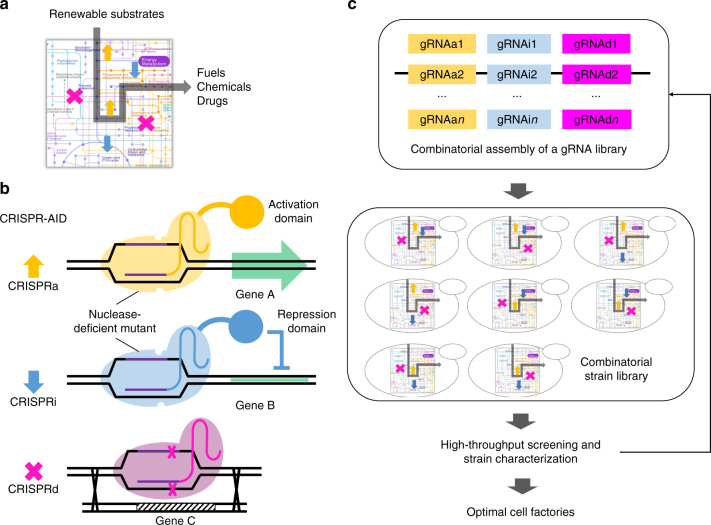Fig. 1.
Design of CRISPR-AID for combinatorial metabolic engineering. a Cell factories for sustainable production of fuels, chemicals, and drugs from renewable resources. b Development of CRISPR-AID using three orthogonal CRISPR proteins, one nuclease-deficient CRISPR protein fused with an activation domain for CRISPRa, another nuclease-deficient mutant fused with a repression domain for CRISPRi, and a third catalytically active CRISPR protein for CRISPRd. c CRISP-AID enables combinatorial metabolic engineering by exploring all the possible gRNA combinations to construct optimal cell factories

